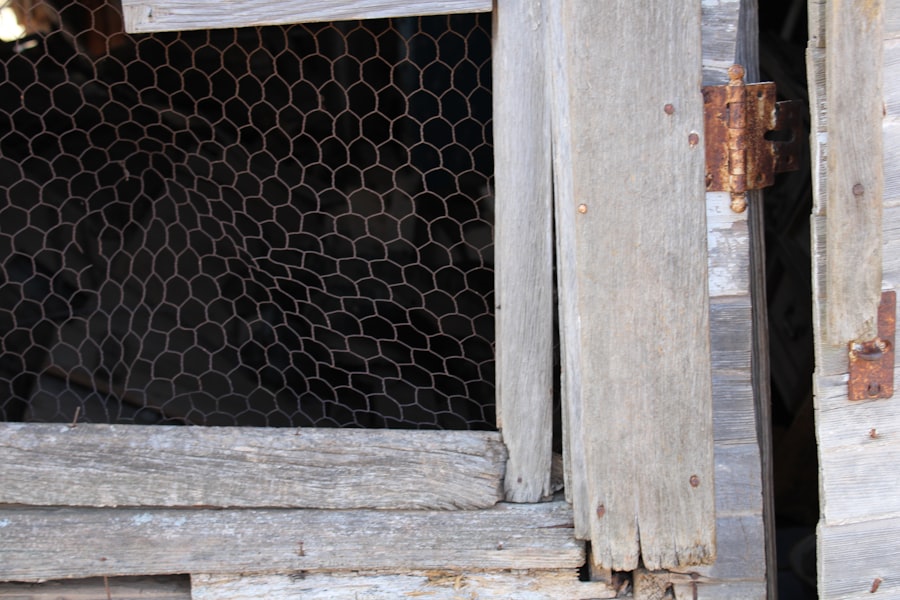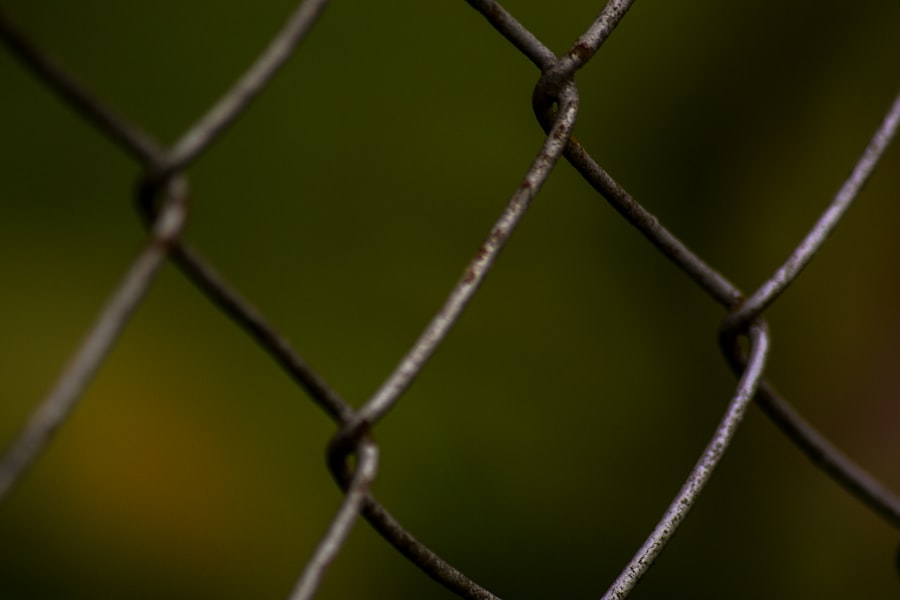Chickens are naturally curious and opportunistic animals that actively explore their environment in search of food and resources. They are easily startled and can be wary of unfamiliar objects or movements. Understanding these behavioral traits is essential for developing effective and humane deterrent strategies.
Chickens are social creatures that typically follow the lead of their flock. When one chicken discovers a new food source or potential nesting area, others are likely to follow. A hierarchical structure exists within chicken flocks, with dominant individuals often guiding the group’s foraging and roosting decisions.
This social dynamic means that deterrent strategies should focus on influencing the behavior of the entire flock rather than targeting individual chickens. A comprehensive understanding of chicken behavior is crucial for implementing effective, humane, and sustainable methods to keep chickens away from specific areas. By recognizing their natural tendencies and social structures, it becomes possible to develop strategies that discourage chickens from entering unwanted locations without causing them harm.
Table of Contents
- 1 Creating Physical Barriers
- 2 Utilizing Natural Deterrents
- 3 Implementing Visual Deterrents
- 4 Providing Alternative Feeding Areas
- 5 Training and Supervising the Chickens
- 6 Seeking Professional Help
- 7 FAQs
- 7.1 What are some effective ways to keep chickens out of my vegetable garden?
- 7.2 What type of fencing is best for keeping chickens out of a vegetable garden?
- 7.3 What are some physical barriers that can be used to keep chickens out of a vegetable garden?
- 7.4 Are there any natural repellents that can be used to keep chickens out of a vegetable garden?
- 7.5 How can I provide alternative areas for chickens to forage to keep them out of my vegetable garden?
Key Takeaways
- Chickens are naturally curious and will explore their surroundings, so understanding their behavior is crucial in deterring them from unwanted areas.
- Physical barriers such as fences and netting can effectively keep chickens out of specific areas and protect gardens or crops.
- Natural deterrents like predator urine or strong-smelling plants can help keep chickens away from certain areas without causing harm to them.
- Visual deterrents such as scarecrows or reflective objects can startle chickens and discourage them from entering restricted areas.
- Providing alternative feeding areas with attractive food sources can redirect chickens’ attention away from areas where they are not wanted.
- Training and supervising chickens can help reinforce boundaries and discourage them from straying into unwanted areas.
- Seeking professional help from animal behaviorists or poultry experts can provide additional strategies and solutions for deterring chickens from specific areas.
Creating Physical Barriers
Installing Fences and Gates
One of the most straightforward ways to deter chickens from accessing certain areas is by creating physical barriers. This can include installing fences, gates, or other structures that prevent chickens from entering specific locations. When implementing physical barriers, it’s essential to consider the size and agility of the chickens, as they may be able to fly or jump over low fences.
Securing and Maintaining Barriers
Additionally, it’s important to ensure that the barriers are secure and well-maintained to prevent chickens from finding ways to bypass them. This includes regularly inspecting and repairing any damage to maintain the effectiveness of the barriers.
Using Netting or Mesh
Another effective physical barrier is the use of netting or mesh to cover vulnerable areas such as gardens or outdoor dining areas. This can prevent chickens from accessing these spaces while still allowing for airflow and visibility. When using netting or mesh, it’s crucial to regularly inspect and repair any damage to maintain its effectiveness.
A Practical and Reliable Solution
Overall, creating physical barriers is a practical and reliable way to deter chickens from unwanted areas, especially when combined with other deterrent strategies.
Utilizing Natural Deterrents

Incorporating natural deterrents can be an effective way to keep chickens away from specific areas without causing them harm. For example, planting certain herbs and flowers such as lavender, marigold, or mint can naturally repel chickens due to their strong scents. Additionally, using natural predators such as dogs or cats can help deter chickens from entering certain spaces.
However, it’s important to ensure that these animals are well-trained and supervised to prevent any harm to the chickens. Another natural deterrent is the use of citrus peels or vinegar, which can be scattered around the perimeter of the area you want to protect. The strong smell of these substances can deter chickens from approaching, as they find the scent unpleasant.
It’s important to regularly replenish these natural deterrents to maintain their effectiveness over time. Overall, utilizing natural deterrents is a humane and environmentally friendly way to keep chickens away from specific areas while also adding beauty and diversity to your surroundings.
Implementing Visual Deterrents
Visual deterrents can be an effective way to deter chickens from specific areas by exploiting their natural instincts and behaviors. For example, hanging shiny objects such as CDs or aluminum foil strips can create reflections and movements that startle and deter chickens. Additionally, using scarecrows or other life-like figures can create a sense of danger and uncertainty for the chickens, making them less likely to approach.
Another visual deterrent is the use of motion-activated devices that emit sounds or lights when triggered by movement. These devices can startle chickens and discourage them from entering specific areas without causing them harm. It’s important to regularly change the placement and appearance of visual deterrents to prevent chickens from becoming accustomed to them over time.
Overall, implementing visual deterrents is a practical and non-invasive way to keep chickens away from unwanted areas while also adding visual interest to your surroundings.
Providing Alternative Feeding Areas
One effective way to deter chickens from unwanted areas is by providing alternative feeding areas that are more attractive and accessible. By offering a designated feeding space with a variety of grains, seeds, and other treats, you can redirect the chickens’ attention away from vulnerable areas such as gardens or outdoor dining spaces. It’s important to regularly replenish the food in these alternative feeding areas to maintain their appeal and effectiveness.
Another strategy is to scatter food in open spaces away from the areas you want to protect. This can encourage chickens to forage in different locations, reducing their interest in accessing specific areas. Additionally, providing enrichment activities such as hanging treats or toys can keep chickens engaged and occupied in their designated feeding areas.
Overall, providing alternative feeding areas is a proactive and sustainable way to deter chickens from unwanted spaces while also promoting their natural foraging behaviors.
Training and Supervising the Chickens

Positive Reinforcement Techniques
By using positive reinforcement techniques such as rewards and praise, you can teach chickens to avoid certain locations and follow specific commands. It’s important to be consistent and patient when training chickens, as it may take time for them to learn new behaviors.
Supervising Free-Ranging Chickens
Supervising chickens when they are free-ranging can also help deter them from unwanted areas. By keeping an eye on their behavior and intervening when necessary, you can redirect them away from vulnerable spaces and reinforce positive behaviors. Additionally, providing regular interaction and enrichment activities can keep chickens engaged and less likely to seek out forbidden areas.
A Proactive and Humane Approach
Overall, training and supervising chickens is a proactive and humane way to deter them from accessing specific locations while also strengthening your bond with them.
Seeking Professional Help
If you are struggling to deter chickens from unwanted areas despite implementing various strategies, it may be beneficial to seek professional help. Consulting with a veterinarian or animal behaviorist can provide valuable insights into the behavior of chickens and offer tailored solutions for your specific situation. Additionally, professional trainers or pest control experts may have specialized knowledge and experience in deterring chickens from specific locations.
Another option is to reach out to local agricultural extension services or poultry organizations for guidance and support. These resources may offer workshops, seminars, or educational materials on managing chicken behavior and implementing effective deterrent strategies. Overall, seeking professional help can provide valuable assistance in deterring chickens from unwanted areas while also ensuring their well-being and welfare.
In conclusion, understanding the behavior of chickens is essential for implementing effective deterrent strategies that are both humane and sustainable. By creating physical barriers, utilizing natural deterrents, implementing visual deterrents, providing alternative feeding areas, training and supervising the chickens, and seeking professional help when needed, you can effectively deter chickens from accessing specific locations while promoting positive behaviors and strengthening your bond with them. With patience, consistency, and a deep understanding of chicken behavior, you can create a harmonious environment where both humans and chickens can coexist peacefully.
If you’re looking for a way to keep chickens out of your vegetable garden, you may want to consider investing in a secure chicken coop like the Snaplock Chicken Coop or the Hannah Montana Chicken Coop. These coops are designed to keep your chickens contained and away from your garden, allowing you to protect your vegetables from being trampled or eaten. Additionally, if you’re interested in raising geese, you can also check out this article on how to care for goslings for more information on poultry care.
FAQs
What are some effective ways to keep chickens out of my vegetable garden?
Some effective ways to keep chickens out of your vegetable garden include using fencing, creating physical barriers, using repellents, and providing alternative areas for the chickens to forage.
What type of fencing is best for keeping chickens out of a vegetable garden?
A sturdy wire mesh or poultry netting with small openings is best for keeping chickens out of a vegetable garden. Make sure the fencing is at least 4 feet tall and buried a few inches into the ground to prevent chickens from digging under it.
What are some physical barriers that can be used to keep chickens out of a vegetable garden?
Physical barriers such as cloches, row covers, and chicken wire cages can be used to protect individual plants or entire garden beds from chicken damage.
Are there any natural repellents that can be used to keep chickens out of a vegetable garden?
Yes, natural repellents such as citrus peels, garlic, hot pepper spray, and vinegar can be used to deter chickens from entering the vegetable garden.
How can I provide alternative areas for chickens to forage to keep them out of my vegetable garden?
You can create designated foraging areas for chickens by setting up a separate fenced-off space with grass, bugs, and other natural chicken treats to keep them occupied and away from the vegetable garden.
Meet Walter, the feathered-friend fanatic of Florida! Nestled in the sunshine state, Walter struts through life with his feathered companions, clucking his way to happiness. With a coop that’s fancier than a five-star hotel, he’s the Don Juan of the chicken world. When he’s not teaching his hens to do the cha-cha, you’ll find him in a heated debate with his prized rooster, Sir Clucks-a-Lot. Walter’s poultry passion is no yolk; he’s the sunny-side-up guy you never knew you needed in your flock of friends!







